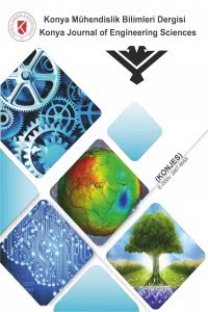Organize sanayi atıksularının zehirliliği
Toxicity of organized industrial zone wastewater
___
APHA, 1989. Standard Methods for the Examination of Water and Wastewater, Part 800. Bioassay methods for aquatic organisms. 14 Th. ed., Amer. Wat. Works Ass., Wat. Pollut., Fed., Washington DC. Aruldoss, J.A., Viraraghavan, T., 1998. Toxicity testing of refinery wastewater using Microtox, B. Environ. Contam. Tox., 60, 456‐463.Bat., L., Öztürk, M., 1998. Akuatik toksikoloji, S.D.Ü Eğirdir Su Ürünleri Fak. Dergisi, 21, 148‐165.
Aydın, M.E., Kara, G., 2004. An investigation on the toxicity of sewage, Fresen. Environ., Bull., 13, 1444‐ 1448.
Aydın, M.E., Kara, G., Sarı, S., 2002. Hastane atıksularında fitotoksisite, GAP IV. Mühendislik Kongresi”, 1410 ‐ 1417, Şanlıurfa.
Devare, M., and Bahadir, M., 1994. Biological monitoring of landfill leachates using plants and luminescent bacteria, Chemosphere, 28, 261‐271.
Ehrlich, P.R., and E.O., Wilson, 1991. Biodiversity studies, Science and Policy, 253, 758‐762.
EPA, 1991. U.S Environmental Protection Agency, U.S. Army Corps of Engineers, Short Term Methods for Estimating The Chronic Toxicity of Effluents and Receiving Waters to Fresh Organisms, Washington.
Ford, D.L., 1992. Toxicity reduction evaluation and control, Tech. Publ., England, 3, 25‐28.
Gerbardt, A., 1998. Whole toxicity testing with Oncorhyncus Mykiss (Walbaum 1792): Survival and behavioral responses to a dilution series of a mining effluent in South Africa, Arch. Environ. Con. Tox., 35, 309‐316.
Huber, L., Baumung, H., Metzner, G., and Popp, W., 1979. Ecological Effects of Refinery Effluents in Fresh Water with Particular Reference to Substances on list 1 of The EEC Guidelines For Water Protection. In: The Environmental Impact of. Refinery Effluents, CONCAWE Report no 5/79.
Kampke, K., Freitag, D., Kettrup, A., Bahadir, M., 1994. Ecotoxicological assessment of inorganic waste disposal in salt mines part I: Tests with aquatic organisms, Fresen. Environ., Bull., 3, 119‐126.
Şengül, F., Müezzinoğlu, A., 1987. Atıksularda Balık Biyodeneyinin Uygulanması ve ZSF Hesabı ile İlgili Bir Örnek Çalışma, Dokuz Eylül Üniversitesi, Fen Bilimleri Enstitüsü, Bornova, İzmir.
SKKY (Su Kirliliği Kontrol Yönetmeliği), 7 Ocak 1991 tarihli 20748 sayılı resmi gazetede yayınlanmış.
Tomer, M., 1999. Quality of Water and Wastewater, Lewis Publishers, United States, 260.
Vaal, M.A., Leeuween, C., J.V., Hoekstra, J.A., 2000. Variation in sensitivity of aquatic species to toxicants practical consequences for effect assessment of chemical substances, Environ. Manage., 25, 415‐ 423.
WERL, 2000. Phytotoxicity and Seedling Growth Response, Journal of the Woods End Research Laboratory, 1, 4.
- ISSN: 1300-5200
- Yayın Aralığı: Yılda 4 Sayı
- Başlangıç: 2018
- Yayıncı: -
MUSTAFA TOLGA ÇÖĞÜRCÜ, Mahmut Sami DÖNDÜREN, MUSTAFA ALTIN
Betonla donatı arasındaki aderans davranışının deneysel incelenmesi
M. Sami DÖNDÜREN, M. Tolga ÇÖĞÜRCÜ, MUSTAFA ALTIN
Yapay model kaya malzemesindeki yapısal farklılıkların elektriksel iletkenlik yöntemi ile tespiti
Konya kent merkezinde yer alan camilerin mimari özellikleri açısından analitik değerlendirmesi
Robust yöntemlerle uyuşumsuz ölçülerin belirlenmesi
SAİM KORUR, Ercan H. OĞUZALP, Büyükşahin Süheyla SIRAMKAYA
Mevsimlik kar erimesinin yapay sinir ağları yöntemi ile tahmin edilmesi
Organize sanayi atıksularının zehirliliği
Mehmet Emin AYDIN, Gülnihal KARA
Türev tabanlı kenar çıkarma ile tam otomatik vektörizasyon
Mimar Sinan yapılarında kubbeli örtü sistemlerinin yapısal analizi
